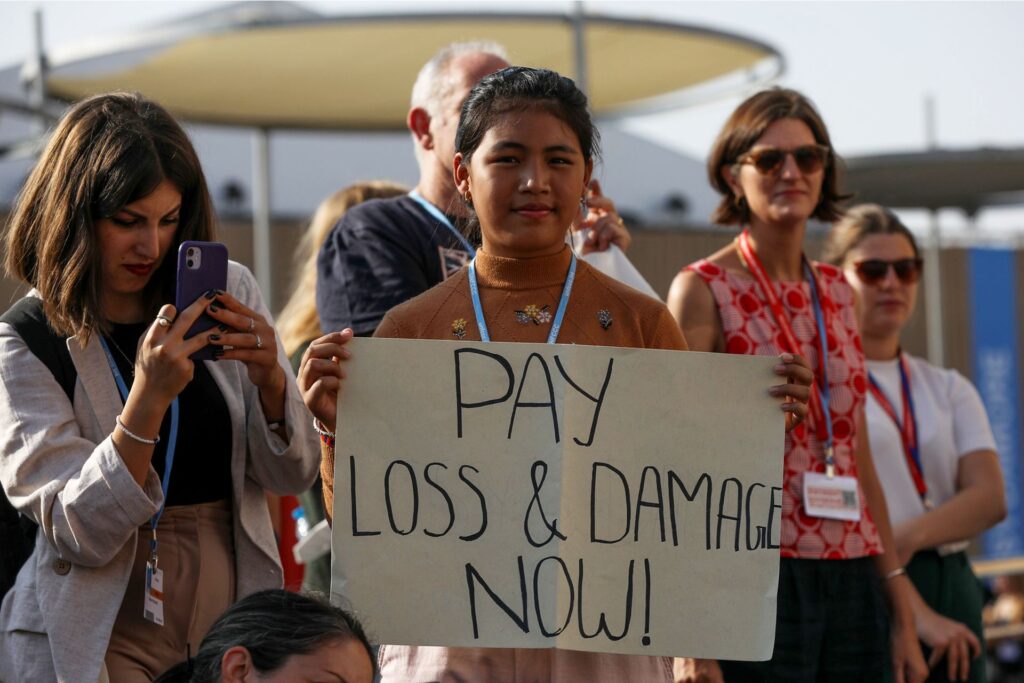Today marks the beginning of the final week at COP27, and the next five days will determine whether the event is deemed a climate success or failure. We recap on some of the unexpected moments that have happened so far, both in and around the conference.
Last minute funding of Loss and Damage
A few unexpected but welcome contributions to the Loss and Damage finances have been made since the start of COP27. There are three types of Loss and Damage finances: cutting emissions, adapting to climate impacts, and for loss and damage. The most controversial of the three is loss and damage, as wealthier countries have shied away in fear of having to pay massive compensation amounts.
Nonetheless, Scotland was the first to provide funds, followed by Denmark, Belgium, and Germany. Austria also joined, pledging $50 (£44m). A $20 million climate fund for lost resources and land by developing nations was also announced by New Zealand.
The UK has also pledged to triple its funding for international climate support, totalling £11.6 billion over the next 5 years. Funding will be distributed to areas such as clean energy innovation, climate adaptation, and Congo Forest conservation.
“The growing number of country pledges on loss and damage funding are significant and welcome,” said Emily Wilkinson of ODI thinktank. “We expect more countries to pledge during COP27. This puts further pressure on negotiators to agree to the development of an appropriate financing mechanism.”
Africa reveals first integrated green hydrogen plant
Although the need for financial assistance for Africa in the fight against the climate disaster has received much attention, it is also important to recognise the continent’s great potential for harnessing and utilising cleantech innovation.
On day 2 of COP27, the first stage of Africa’s first fully integrated green hydrogen plant was commissioned after being unveiled by Fertiglobe, Scatec, Orascom Construction, and the Sovereign Fund of Egypt.
It is a massive green milestone and will help to produce up to 90,000 tons of green ammonia per year in Fertiglobe’s existing ammonia plants by creating about 15,000 tons of green hydrogen annually. The facility itself will be made up of 100 MW of electrolysers that are powered by 260 MW of solar and wind.
The venture will be situated close to the Suez Canal Economic Zone in Ain Sokhna. The “Egypt Green” initiative, which would manufacture hydrogen from water and renewable energy sources, will be crucial in assisting in the decarbonization of difficult-to-abate sectors.
Higher number of fossil fuel firm attendees
Many of the key points at COP27 revolve around moving towards more sustainable energy sources like renewables and potentially hydrogen, shifting away from higher CO2 emitting industries like fossil fuel. Although, the number of fossil fuel lobbyists at COP actually increased from last year to this year.
A list analysed by Global Witness, Corporate Accountability, and Corporate Europe Observatory showed that at least 636 individuals who are classified as fossil fuel lobbyists will be present either whole or in part for the conference. Professionals representing industry groups or working directly for fossil fuel companies as well as individuals employed by or connected to state-owned fossil fuel organisations were included in the organisations’ calculations.
Compared to last year, the analysts estimate that there has been a 25% rise in the number of people interested in fossil fuels. At Glasgow (COP26) the figure was only 503, compared to this year’s 636.
This significant increase in fossil fuel lobbyist attendees is bringing in a mixed reaction from various audiences. The Guardian voiced conflict from both sides: “While many environmental groups hoping to encourage the transition away from fossil fuels say it can be beneficial to bring private interests to the negotiating table, these benefits risk being outweighed by the sheer size of the delegations and suspicions that lobbyists attend the talks to slow progress rather than discuss limiting their own industries.”
With an increase of over 100 oil and gas industry lobbyists from last year, COP27 attendees and activists are eager to see their impact on the rest of the conference and its outcomes.

